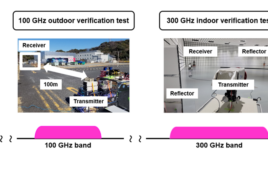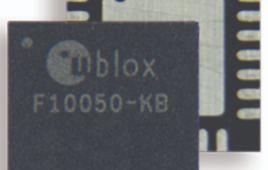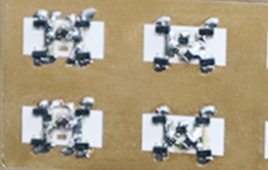A tiny team at Hanscom Air Force Base is developing a prototype combat system capable of providing video, voice, chat and command and control to partner nations for under a half-million dollars.
The Airborne Extensible Relay Over-Horizon Network, or AERONet, digitally links friendly forces, providing them with their own location, the location of other friendly forces and real-time enemy movement updates. It will be showcased to partner nations at the Bold Quest exercise in Finland this month. AERONet is a version of systems already used by law enforcement to patrol borders and track and combat smugglers. First responders use similar systems while fighting wildfires in the mountain states.
The system was conceived by Air Force Chief of Staff Gen. David L. Goldfein, refined by Air Force Research Lab and is being brought to market by the Command, Control, Communications, Intelligence and Networks Program, or C3I&N, executive office at Hanscom AFB. The Tactical Data Links Lab at Hanscom AFB helped prototype a system, funded and built with the goal of providing turnkey combat networks to partner nations that do not have arms export agreements for this type of data link information.
“Bold Quest is the first time we will be able to show our target partner nation audience what AERONet can do for them,” said Maj. Scott Frye, the AERONet program manager with the C3I&N Quick Reaction Capability Branch. He is helping to transition AERONet from an AFRL concept to reality. “We already have interest from several countries, so we think there’s a large demand out there for a system that creates a combat network and makes intelligence gathering and close-air support more effective.”
Goldfein wanted a system that would provide off-the-shelf technology to countries that struggle with violent extremists but don’t have access to the most expensive and classified command and control suites. AERONet provides commercial-level security and is not subject to stringent export controls placed on advanced U.S military technology. Airmen designed the airborne node to be versatile, integrating into fixed wing, rotary and unmanned aircraft platforms from multiple partner nations.
The system has three nodes, each with distinct combat capabilities: The airborne node is a radio and computer hybrid that users can attach to nearly any aircraft. It receives and relays voice and chat and pipes full motion video to and from any other node in the system. Dismounted troops such as joint tactical attack controllers and tactical air control parties use the ground node, which looks like a tablet and satellite-radio hybrid. It can run on Android technology and provides operators with airborne command and control capability from smartphones or tablets.
The final node, a reach-back command and control tactical operations center, provides decision makers with access to all the information flowing through AERONet from their troops at the tactical edge. C3I&N’s Aerial Networks Division will demonstrate the entire system during exercise Bold Quest in Finland, which is tailored to experiment with interoperability among NATO and non-NATO nations.
“Imagine you’re a country, or a military, with a problem combating violent extremists who hide in remote regions,” said Lt. Col. Jung Ha, the C3I&N’s Quick Reaction Capability Branch director. “The advantage you have is your training and your technology. AERONet implementation can provide non-Link 16-enabled U.S. and partner nations’ warfighters the requisite data to enhance battlespace intelligence superiority by providing near-real-time situational awareness, thereby increasing their own force’s combat lethality while reducing the probability of fratricide incidents.”
Frye and Ha also predict humanitarian relief uses for the system, making it attractive to nations frequently struck by manmade and natural disasters.
To date, C3I&N has spent less than $1 million developing AERONet and estimates partner nations can access and learn to use the combat network for less than $300,000. More complex systems with more nodes and capabilities increase the cost, though many nations may have an existing network that AERONet can be used to soup-up. Ranges can vary, depending on the system setup, from dozens of miles to scores of miles. The team is working toward an over-the-horizon version, but say it’s not ready for distribution yet.
The AERONet team demonstrated the system to Goldfein and Secretary of the Air Force Heather Wilson, and learned valuable lessons during light-attack demonstrations held one year ago. Hanscom AFB’s AERONet team hopes to see the system proliferate to countries who will take the opportunity to partner and train with the U.S., and at the same time gain access to valuable combat capability at an affordable price in line with CSAF and National Defense Strategy priorities.




